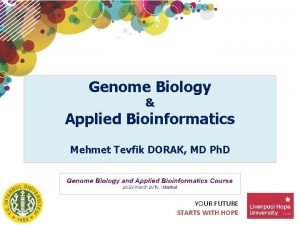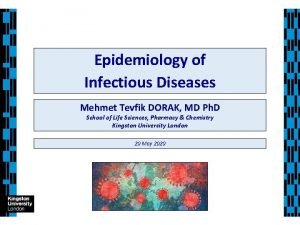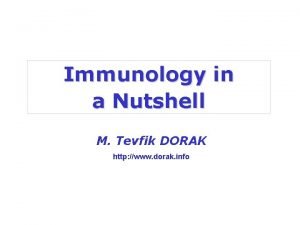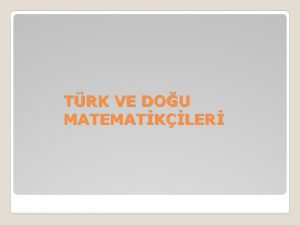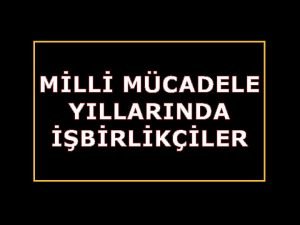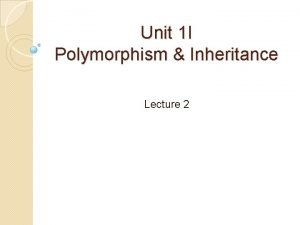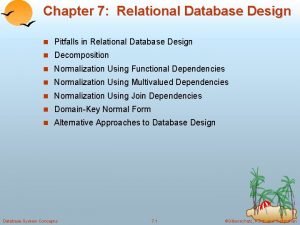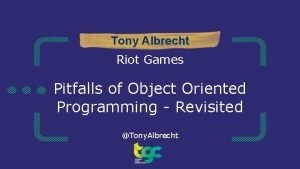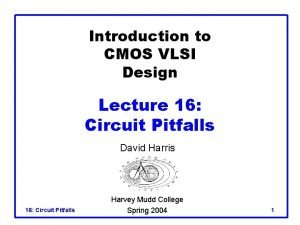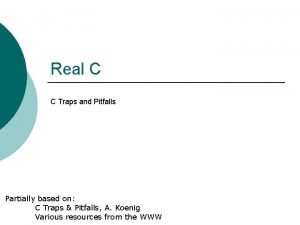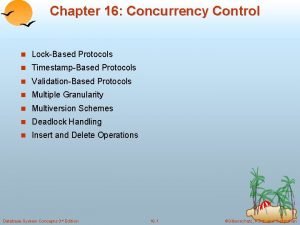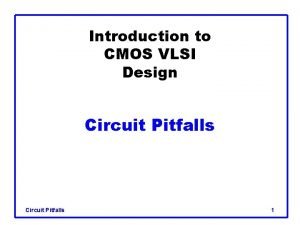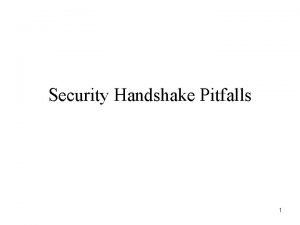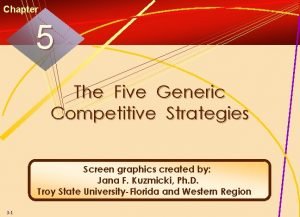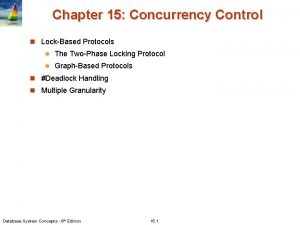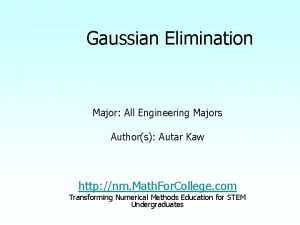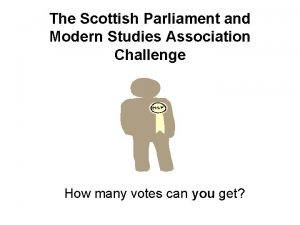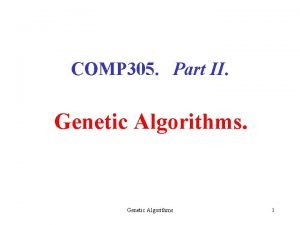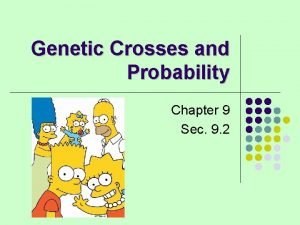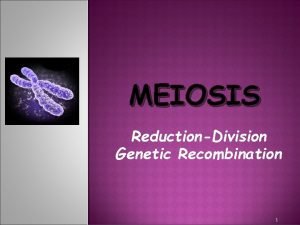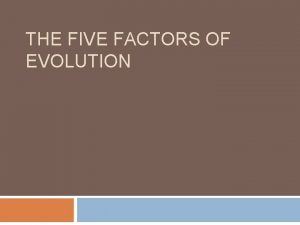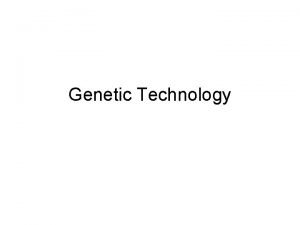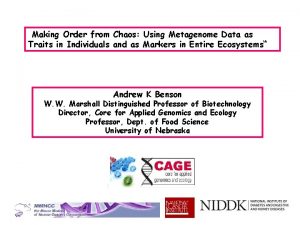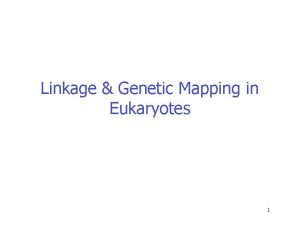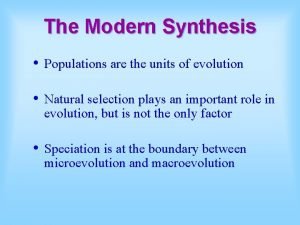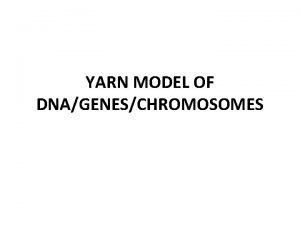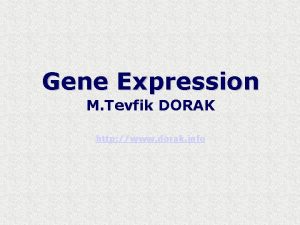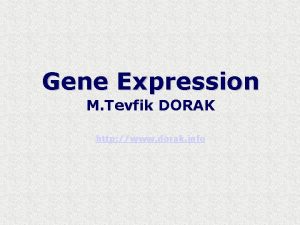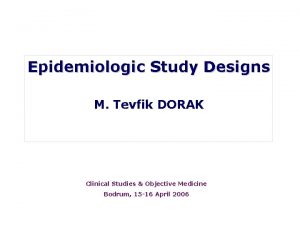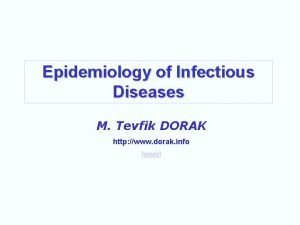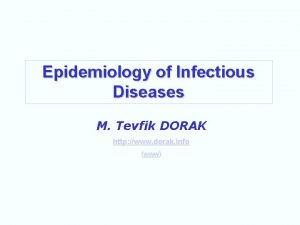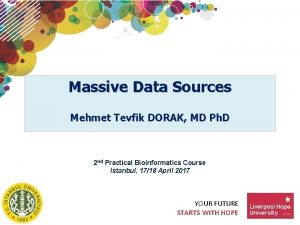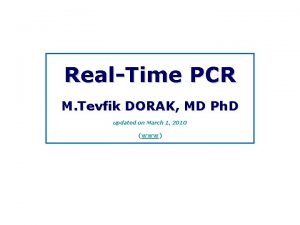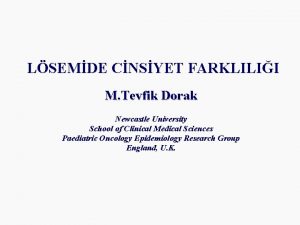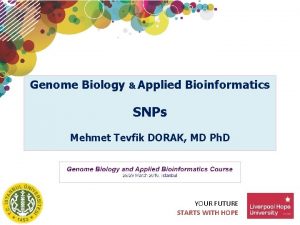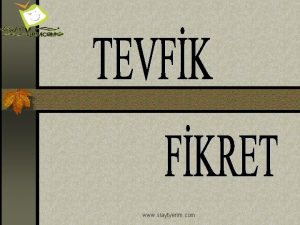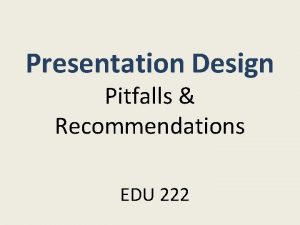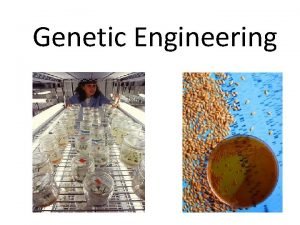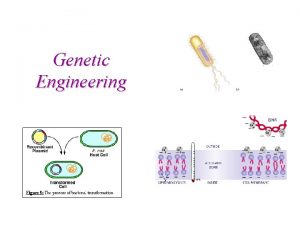Pitfalls in Genetic Association Studies M Tevfik DORAK










































- Slides: 42

Pitfalls in Genetic Association Studies M. Tevfik DORAK Paediatric and Lifecourse Epidemiology Research Group Sir James Spence Institute Newcastle University, U. K. Clinical Studies & Objective Medicine Bodrum, 15 -16 April 2006

Incident or prevalent cases Comparable controls or convenience samples Population based? Confounding by ethnicity / Population stratification Confounding by locus / Linkage disequilibrium Statistical power Multiple comparisons No adjustment for known associations Effect modification by sex Different genetic models Overinterpretation LD ruled out? Biological plausibility (a priori hypothesis)? Replication / Consistency Publication bias

Tabor, Risch & Myers. Nat Rev Genet 2002 (www)

Internal Validity of an Association Study Avoid "BIAS" Control for "CONFOUNDING" Rule out "CHANCE"

Internal Validity of an Association Study Avoid "BIAS" Be careful! Control for "CONFOUNDING" Matching, Stratification, MV Analysis Rule out "CHANCE" Large sample, Replication

Special Kinds of Confounding in Genetic Epidemiology CONFOUNDING by Locus (LD) MV Analysis, LD Analysis CONFOUNDING by Ethnicity (Population Stratification) Matching, Stratification, MV Analysis Family-Based Association Studies Genomic Controls and Specially Designed GE Analysis

Special Kinds of Confounding in Genetic Epidemiology CONFOUNDING by Locus (LD) MV Analysis, LD Analysis CONFOUNDING by Ethnicity (Population Stratification) Matching, Stratification, MV Analysis Family-Based Association Studies Genomic Controls and Specially Designed GE Analysis

Mapping Disease Susceptibility Genes by Association Studies Plot of minus log of P value for case-control test for allelic association with AD, for SNPs immediately surrounding APOE (<100 kb) Martin, 2000 (www)

Example: Linkage Disequilibrium HLA-B 47 association with congenital adrenal hyperplasia (Dupont et al, Lancet 1977) HLA-B 14 association with late-onset adrenal hyperplasia (Pollack et al, Am J Hum Genet 1981) Is congenital adrenal hyperplasia an immune system-mediated disease?

Example: Linkage Disequilibrium HLA-B 47 association with congenital adrenal hyperplasia is due to deletion of CYP 21 A 2 on HLA -B 47 DR 7 haplotype HLA-B 14 association with late-onset adrenal hyperplasia is due to an exon 7 missense mutation (V 281 L) in CYP 21 A 2 on HLA-B 14 DR 1 haplotype

Preliminary evidence of an association between HLADPB 1*0201 and childhood common ALL supports an infectious aetiology Leukemia 1995; 9(3): 440 -3 Evidence that an HLA-DQA 1 -DQB 1 haplotype influences susceptibility to childhood common ALL in boys provides further support for an infection-related aetiology Br J Cancer 1998; 78(5): 561 -5 Why not LD?


Publication Bias Negative studies do not get published NIH Genetic Associations Database ? A different kind of publication bias? Preliminary evidence of an association between HLADPB 1*0201 and childhood common ALL supports an infectious aetiology Leukemia 1995; 9(3): 440 -3 Evidence that an HLA-DQA 1 -DQB 1 haplotype influences susceptibility to childhood common ALL in boys provides further support for an infection-related aetiology Br J Cancer 1998; 78(5): 561 -5

Special Kinds of Confounding in Genetic Epidemiology CONFOUNDING by Locus (LD) MV Analysis, LD Analysis CONFOUNDING by Ethnicity (Population Stratification) Matching, Stratification, MV Analysis Family-Based Association Studies Genomic Controls and Specially Designed GE Analysis

Wacholder, 2002 (www)

Population Stratification Marchini, 2004 (www)

Cardon & Palmer, 2003 (www)

Internal Validity of an Association Study Avoid "BIAS" Be careful! Control for "CONFOUNDING" Matching, Stratification, MV Analysis Rule out "CHANCE" Large sample, Replication

Example: Functional Correlation


Example: Replication HFE-C 282 Y Association in Childhood ALL % % WELSH GROUP SCOTTISH GROUP 117 patients - 415 newborns P = 0. 005; OR = 2. 8 (1. 4 to 5. 4) In c. ALL: P = 0. 02; OR = 2. 9 (1. 4 to 6. 4) 135 patients - 238 newborns P = 0. 0004; OR = 3. 0 (1. 7 to 5. 4) In c. ALL: P < 0. 0001; OR = 4. 7 (2. 5 to 8. 9) Dorak et al, Blood 1999

Palmer LJ. Webcast (www)

Multiple Comparisons & Spurious Associations Diepstra, Lancet 2005 (www)

Genetic Models and Case-Control Association Data Analysis The data may also be analysed assuming a prespecified genetic model. For example, with the hypothesis that carrying allele B increased risk of disease (dominant model), the AB and BB genotypes are pooled giving a 2 x 3 x 2 table. This is particularly relevant when allele B is rare, with few BB observations in cases and controls. Alternatively, under a recessive model for allele B, cells AA and AB would be pooled. Analysing by alleles provides an alternative perspective for case control data. This breaks down genotypes to compare the total number of A and B alleles in cases and controls, regardless of the genotypes from which these alleles are constructed. This analysis is counter-intuitive, since alleles do not act independently, but it provides the most powerful method of testing under a multiplicative genetic model, where risk of developing a disease increases by a factor r for each B allele carried: risk r for genotype AB and r 2 for genotype BB. If a multiplicative genetic model is appropriate, both case and control genotypes will be in Hardy–Weinberg equilibrium, and this can be tested for. A fourth possible genetic model is additive, with an increased disease risk of r for AB genotypes, and 2 r for BB genotypes. This model shows a clear trend of an increased number of AB and BB genotypes, with the risk for AB genotypes approximately half that for BB genotypes. The additive genetic model can be tested for using Armitage’s test for trend. Lewis CM. Brief Bioinform 2002 (www)

HLA-DRB 4 Association in Childhood ALL % % * Boys, n=64 Girls, n=53 * Homozygosity for HLA-DRB 4 family is associated with susceptibility to childhood ALL in boys only (P < 0. 0001, OR = 6. 1, 95% CI = 2. 9 to 12. 6 ) Controls are an unselected group of local newborns (201 boys & 214 girls) * Case-only analysis P = 0. 002 (OR = 5. 6; 95% CI = 1. 8 to 17. 6) This association extends to a DRB 4 -HSP 70 haplotype (OR = 8. 3; 95% CI = 3. 0 to 22. 9) This association has been replicated in Scotland Turkey

HLA-DRB 4 ASSOCIATION ADDITIVE MODEL Linear Model Logit estimates Number of obs = 265 LR chi 2(1) = 14. 24 Prob > chi 2 = 0. 0002 Log likelihood = -139. 37794 Pseudo R 2 = 0. 0486 ---------------------------------------caco | Common Odds Ratio Std. Err. z P>|z| [95% CI] -------+--------------------------------drb 4 add | 2. 208651. 4734163 3. 70 0. 000 1. 45103 - 3. 36186 ---------------------------------------Heterozygosity and Homozygosity Logit estimates Number of obs = 265 LR chi 2(2) = 22. 00 Prob > chi 2 = 0. 0000 Log likelihood = -135. 49623 Pseudo R 2 = 0. 0751 ---------------------------------------caco | Odds Ratio Std. Err. z P>|z| [95% Conf. Interval] -------+--------------------------------Wild-type | 1. 00 (ref) Heterozygosity | 1. 060652. 3557426 0. 18 0. 861. 549642 2. 04676 Homozygosity | 6. 258503 2. 65464 4. 32 0. 000 2. 72534 14. 37211 ---------------------------------------

HLA-DRB 4 - HSPA 1 B HAPLOTYPE ASSOCIATION EFFECT MODIFICATION Logit estimates Number of obs = 532 LR chi 2(3) = 23. 97 Prob > chi 2 = 0. 0000 Log likelihood = -268. 27826 Pseudo R 2 = 0. 0428 ---------------------------------------caco | Coef. Std. Err. z P>|z| [95% Conf. Interval] -------+--------------------------------sex | -. 0299037. 2229554 -0. 13 0. 893 -. 4668883. 4070808 hsp 53 | 2. 530033. 5929603 4. 27 0. 000 1. 367852 3. 692214 _Isex. Xhsp 5~2 | -2. 758189. 8812645 -3. 13 0. 002 -4. 485436 -1. 030943 _cons | -1. 321474. 3517969 -3. 76 0. 000 -2. 010984 -. 6319651 --------------------------------------- CONFOUNDING BY SEX Logit estimates Number of obs = 532 LR chi 2(2) = 11. 99 Prob > chi 2 = 0. 0025 Log likelihood = -274. 26995 Pseudo R 2 = 0. 0214 ---------------------------------------caco | Odds Ratio Std. Err. z P>|z| [95% Conf. Interval] -------+--------------------------------hsp 53 | 3. 32777 1. 191429 3. 36 0. 001 1. 649684 6. 712832 sex |. 7693041. 1636106 -1. 23 0. 218. 5070725 1. 167148 ---------------------------------------Adjusted for sex?

HLA-DRB 4 - HSPA 1 B HAPLOTYPE ASSOCIATION BOYS ONLY Logit estimates Number of obs = 265 LR chi 2(1) = 22. 41 Prob > chi 2 = 0. 0000 Log likelihood = -135. 29119 Pseudo R 2 = 0. 0765 ---------------------------------------caco | Odds Ratio Std. Err. z P>|z| [95% Conf. Interval] -------+--------------------------------hsp 53 | 12. 55392 7. 444028 4. 27 0. 000 3. 926876 40. 13392 --------------------------------------- GIRLS ONLY Logit estimates Number of obs = 267 LR chi 2(1) = 0. 13 Prob > chi 2 = 0. 7205 Log likelihood = -132. 98706 Pseudo R 2 = 0. 0005 ---------------------------------------caco | Odds Ratio Std. Err. z P>|z| [95% Conf. Interval] -------+--------------------------------hsp 53 | 0. 796. 5189439 -0. 35 0. 726. 22181 2. 856571 --------------------------------------- The association is modified by sex

Cardon & Bell. Nat Rev Genet 2001 (www)

Current Criteria for Good Association Studies

Cardon & Bell. Nat Rev Genet 2001 (www)

Statistical checklist for genetic association studies - In a case-control study: Cases and controls derive from the same study base There are more controls than cases (up to 5 -to-1, for increased statistical power) There at least 100 cases and 100 controls - Statistical power calculations are presented - Hardy-Weinberg equilibrium (HWE) is checked and appropriate tests are used - If HWE is violated, allelic association tests are not used - Possible genotyping errors and counter-measures are discussed - All statistical tests are two-tailed - Alternative genetic models of association considered - The choice of marker/allele/genotype frequency (for comparisons) is justified - For HLA associations, a global test for association (G-test, Rx. C exact test) for each locus is used (if necessary, with correction for multiple testing) - Chi-squared and Fisher tests are NOT used interchangeably - P values are presented without spurious accuracy (with two decimal places) - Strength of association has been measured (usually odds ratio and its 95% CI) - In a retrospective case-control study, ORs are presented (as opposed to RRs) - Multiple comparisons issue is handled appropriately (this does not necessarily mean Bonferroni corrections) - Alternative explanations for the observed associations (chance, bias, confounding) are discussed http: //www. dorak. info/hla/stat. html

Multifactorial Etiology ROCHE Genetic Education (www)

Models of gene–environment interactions Hunter, 2005 (www)

Generating Protein Diversity from the 'Small' Genome Banks, 2000 (www)

Generating Protein Diversity from the 'Small' Genome Alternative Splicing Can Generate Very Large Numbers of Related Proteins From a Single Gene Most extreme example is the Drosophila Dscam Gene: 12 x 48 x 33 x 2 = 38, 016 alternative splice variants Black, Cell 2000 (www) Wojtowicz, Cell 2004 (www) DSCAM = Down syndrome cell adhesion molecule

Generating Protein Diversity from the 'Small' Genome Alternative Splicing Can be Tissue or Cell-Specific Lodish et al. Molecular Cell Biology, 5 th Ed, WH Freeman (www)

Generating Protein Diversity from the 'Small' Genome m. RNA editing (base modification) is a different mechanism of alternative splicing Lodish et al. Molecular Cell Biology, 5 th Ed, WH Freeman (www) OMIM 107730 (www) Chen & Chan, 1996 (www) Wedekind, 2003 (www) RNA Editing in The Cell – NCBI Online (www)

Integration of proteomics in genetic epidemiology studies would eliminate a lot of obstacles arising from the following Only <2% of the genome is protein-coding and most sequence variants are silent changes Even genome-wide sequence variant studies cannot identify the genomic counterparts of 1. 5 million proteins Epigenetic changes, alternative transcription/splicing and posttranslational modifications cannot be predicted by study of sequence variants Genomic DNA studies does not take into account selective expression of genes in certain cell or tissues No genetic association is complete without demonstration of the functional relevance

50 s Rule Genome - 1: 50 coding Gene: Protein - 1: 50 ratio Overall efficiency of pure genomic studies 1: 2500

http: //www. dorak. info

 Mehmet dorak
Mehmet dorak Coronavirus
Coronavirus Hoffbrand
Hoffbrand Dorak
Dorak What is gene flow and genetic drift
What is gene flow and genetic drift Gene pool
Gene pool What is the difference between genetic drift and gene flow
What is the difference between genetic drift and gene flow Genetic programming vs genetic algorithm
Genetic programming vs genetic algorithm Genetic programming vs genetic algorithm
Genetic programming vs genetic algorithm El harezmi eserleri
El harezmi eserleri Hüseyin tevfik paşa
Hüseyin tevfik paşa Paradigm shift from women studies to gender studies
Paradigm shift from women studies to gender studies What are two pitfalls (problems) of lock-based protocols
What are two pitfalls (problems) of lock-based protocols Pitfalls of prototyping
Pitfalls of prototyping Pitfalls of operator overloading in c++
Pitfalls of operator overloading in c++ Concurrency control mechanism
Concurrency control mechanism Strategic management process
Strategic management process Pitfalls in dbms
Pitfalls in dbms The perils and pitfalls of leading change case solution
The perils and pitfalls of leading change case solution Pitfalls of object oriented programming
Pitfalls of object oriented programming Latchup in vlsi
Latchup in vlsi Adm decide model
Adm decide model C traps and pitfalls
C traps and pitfalls What are two pitfalls (problems) of lock-based protocols
What are two pitfalls (problems) of lock-based protocols Circuit pitfalls in vlsi
Circuit pitfalls in vlsi Security handshake pitfalls
Security handshake pitfalls Pitfalls in differentiation
Pitfalls in differentiation The pitfalls of a differentiation strategy include
The pitfalls of a differentiation strategy include What are two pitfalls (problems) of lock-based protocols
What are two pitfalls (problems) of lock-based protocols Pitfalls in selecting new ventures
Pitfalls in selecting new ventures Forward elimination example
Forward elimination example Contoh pertanyaan bipolar dalam wawancara
Contoh pertanyaan bipolar dalam wawancara Modern studies association
Modern studies association Dairy comp 305 tutorial
Dairy comp 305 tutorial Section 9-2 genetic crosses
Section 9-2 genetic crosses Genetic recombination
Genetic recombination Genetic drift definition
Genetic drift definition Genetic engineering
Genetic engineering Genetic effects on gene expression across human tissues
Genetic effects on gene expression across human tissues Genetic predisposition
Genetic predisposition Chi square test for linkage
Chi square test for linkage Genetic drift example
Genetic drift example Dna model yarn
Dna model yarn
